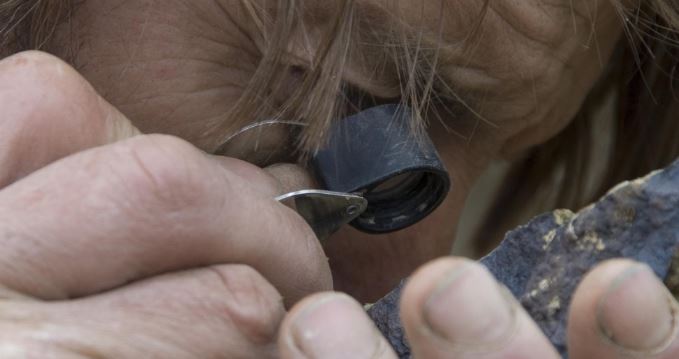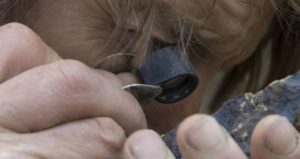Klondike Gold releases Lone Star assays

Klondike Gold Corp. [KG-TSXV] has released assay results from drilling at the company’s Klondike District property near Dawson City, Yukon.
Ever since the original Klondike discoveries triggered a massive gold rush in 1896, prospectors have been baffled by their inability to find the bedrock source of all the placer gold which has been extracted from the streams and tributaries around Dawson City in the Yukon.
Evidence of that work remains visible beside the road into Dawson because of the rock piles that make the area look a bit like a lunar landscape. It has been estimated that the Klondike gold fields may have produced as much as 20 million ounces of gold from placer mines.
Yet that same area has yielded only 1,200 ounces of hard rock gold, most of it produced from the Lone Star mine prior to the start of the First World War in 1914.
Klondike Gold has been working to solve the mystery by assembling a large property position in the Klondike fields south of Dawson City. The company is backed by Vancouver financier Frank Giustra, who holds a 14.6% per cent stake in the company.
Klondike’s exploration efforts are being led by President and CEO Peter Tallman, a geologist with 35 years of experience in the mining industry. Having worked in Canada, Chile, Mexico, and Australia, Tallman is a director of another Giustra company, Fiore Gold Ltd. [F-TSXV, FIOGF-OTCQB], which has assets in Chile.
Klondike Gold is focused on exploration and development of the Lone Star gold target at the confluence of Bonanza Creek and Eldorado Creek, within a district scale property that is accessible by government-maintained roads and located on the outskirts of Dawson City.
The Lone Star zone is one of five targets drill tested during the 2018 drill program. Additional drill results from Lone Star and other targets will be steadily released as they are received, evaluated and incorporated into the evolving exploration model, the company said in a press release.
On Tuesday the company announced assay results from five drill holes that targeted the Lone Star zone, as well as additional assays from a single hole that probed an area known as the Gay Gulch.
The drill program is part of a systematic evaluation designed to map the geometry of mineralization across the central one kilometre portion of the Lone Star zone.
The company said exploration continues to affirm multiple local sources of bedrock gold mineralization which explain the placer deposits exploited historically within the Klondike District property.
Within the Lone Star zone, five holes (LS18-170 to LS18-174) tested the central portion of the mineralized area. These results from sectional drilling continue to show broad intervals of gold mineralization starting at or near surface, as well as the presence of gold mineralization at greater depths.
Highlights include 0.91 g/t gold over 17.3 metres within an interval of 0.42 g/t gold over 118.3 metres.
The company said a total of 87 holes were drilled in 2018. Assays for 20 holes, all from the Lone Star zone have been released.
On Tuesday, Klondike shares eased 2.08% or $0.005 to 23.5 cents. The 52-week range is 46.5 cents and 21.5 cents.
